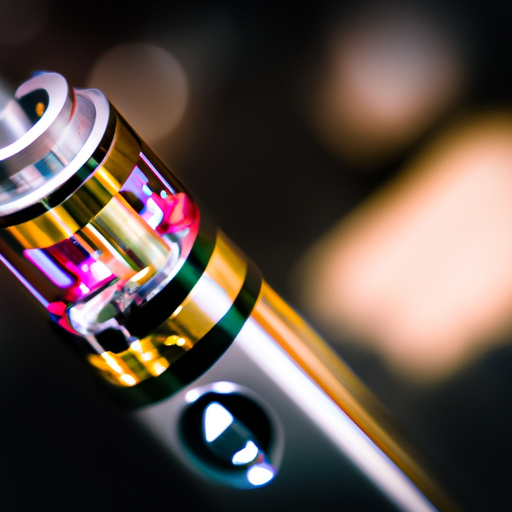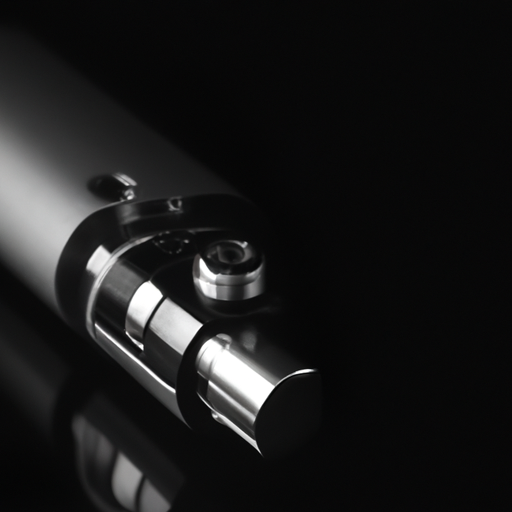No products in the cart.
No products in the cart.
Step into the world of vape pens, where science and technology converge to transform your vaping experience. In this in-depth exploration, we will unravel the mysteries behind vape pens, shedding light on their operation and mechanism. Get ready to unlock the secrets and gain a deeper understanding of how these sleek devices deliver clouds of flavor and satisfaction.
To truly appreciate the wonders of vape pens, it is crucial to comprehend their inner workings. From the heating element to the e-liquid delivery system, each component plays a crucial role in providing a smooth and enjoyable vaping session. Join us as we dive into the intricate details, dissecting the concept of vaporization and the science behind it. By the end, you’ll be equipped with the knowledge to make informed decisions, ensuring a seamless vape pen experience tailored to your preferences. Prepare to be captivated by the behind-the-scenes magic of vape pens.
Vape pens have gained significant popularity in recent years as a portable and discreet option for consuming various substances, such as nicotine or cannabis. These devices are compact, battery-powered devices that vaporize a substance, allowing users to inhale the vapor. Vape pens are often favored by those who are looking for an alternative to traditional smoking methods.
Vape pens, also known as vaporizer pens or e-cigarettes, are handheld devices that heat a substance, such as e-liquid or concentrate, to produce a vapor that is inhaled by the user. They consist of several components that work together to deliver a smooth and satisfying vaping experience.
Vape pens have a wide range of uses, depending on the substance being vaporized. They are commonly used for nicotine delivery as an alternative to smoking cigarettes. Vape pens can also be used for vaporizing cannabis or CBD oil, providing a discreet and convenient method of consumption for those who prefer not to smoke or use traditional methods. Many people appreciate the ease of use and portability that vape pens offer.
Understanding the components of a vape pen is essential to comprehend how these devices operate and deliver vapor. Here are the main components you’ll find in a typical vape pen:
The battery is the power source of the vape pen. It provides the necessary energy to heat the atomizer and vaporize the substance. Vape pens usually have rechargeable batteries that can be conveniently charged using a USB cable. It’s important to choose a vape pen with a reliable and long-lasting battery to ensure consistent performance.
The atomizer is responsible for heating the substance and converting it into vapor. It consists of a heating coil or element that is connected to the battery. When the battery is activated, the coil heats up, causing the substance to evaporate and create vapor. The atomizer is a crucial component that directly affects the flavor and vapor production of a vape pen.
The cartridge or tank is the part of the vape pen that holds the substance being vaporized. It can be pre-filled with e-liquid or concentrate, or it can be refillable, allowing users to add their preferred substance. Cartridges and tanks come in various sizes and designs, depending on the specific vape pen model. The choice between pre-filled and refillable options depends on personal preference and convenience.
The mouthpiece is the end of the vape pen that the user inhales from. It’s typically made of a heat-resistant material, such as plastic or ceramic, and is designed to be comfortable to use. Some vape pens have interchangeable mouthpieces, allowing users to customize their vaping experience. It’s important to keep the mouthpiece clean and free from debris to ensure an enjoyable vaping experience.

Using a vape pen is generally straightforward, but understanding the basic operation is essential for a satisfying experience.
Most vape pens have a simple on/off mechanism. To power on the device, you usually need to press the power button multiple times in quick succession. The exact number of button presses may vary depending on the vape pen model. When it’s time to power off the device, a similar sequence of button presses is required.
To begin vaporizing, simply inhale from the mouthpiece while holding down the power button. The power button activates the battery, which then heats the atomizer and vaporizes the substance. It’s important to inhale smoothly and steadily to ensure proper vapor production. Some vape pens have an automatic draw mechanism that eliminates the need for a power button. Instead, they are activated by inhalation.
Advanced vape pens may offer temperature and voltage settings that allow users to customize their vaping experience. These settings can influence the vapor production, flavor, and throat hit. It’s important to refer to the manufacturer’s instructions to adjust these settings properly. For beginners, using the default settings is often recommended to avoid any potential issues.
Understanding the inner workings of a vape pen can help users appreciate the technology behind it. Here are the key aspects of a vape pen’s mechanism:
The battery provides the necessary power to the atomizer. When the power button is pressed, an electrical current flows from the battery to the heating coil, causing it to heat up. The battery’s capacity and performance directly impact the overall vaping experience.
The heating element is typically a coil made of resistant wire that rapidly heats up when the battery is activated. This heat is then transferred to the substance in the cartridge or tank, causing it to vaporize. Different materials, such as ceramic or quartz, can be used as the heating element depending on the desired vapor production and flavor.
The cartridge or tank holds the e-liquid or concentrate and delivers it to the atomizer for vaporization. In pre-filled vape pens, the substance is already loaded into the cartridge, while refillable vape pens allow users to manually fill the tank. The delivery system ensures a consistent flow of substance to the atomizer for a smooth and enjoyable vaping experience.

Vape pens come in various types, catering to different preferences and needs. Here are three popular types of vape pens:
Disposable vape pens are pre-filled and ready to use right out of the box. They are convenient for users who prefer a hassle-free experience without the need for refilling or recharging. Once the e-liquid or concentrate is depleted, the entire pen is discarded. Disposable vape pens come in a wide range of flavors and strengths, providing users with options that suit their preferences.
Pre-filled vape pens are similar to disposable pens in that they come pre-filled with e-liquid or concentrate. However, instead of being disposable, these pens come with a replaceable cartridge or pod. When the substance in the cartridge is used up, it can be easily replaced with a new one. This option offers more versatility and cost-effectiveness compared to disposable vape pens.
Refillable vape pens provide the most flexibility and customization options. Users can choose their preferred e-liquid or concentrate and manually fill the tank. Refillable pens require regular maintenance and cleaning, but they allow for a wide variety of flavors and strengths. These pens are popular among experienced vapers who enjoy experimenting with different substances and customizing their vaping experience.
While vape pens offer a more convenient and potentially healthier alternative to traditional smoking methods, it’s essential to consider safety when using these devices.
Vape pen batteries should be handled and charged with caution. It’s important to use the charger provided by the manufacturer and avoid using incompatible chargers, as they can pose a risk. Overcharging or using damaged batteries can lead to overheating or even explosions. Regularly inspect the battery for any signs of damage, such as dents or leaks, and replace it if necessary.
When using pre-filled or refillable vape pens, it’s crucial to use reputable and high-quality e-liquids or concentrates. Low-quality substances can contain harmful ingredients or contaminants that may negatively affect health when vaporized. Always check the ingredients and choose products that have been tested and certified by reputable laboratories.
To ensure safety, it’s important to follow the manufacturer’s instructions and guidelines when using a vape pen. This includes proper handling, charging, and storage of the device. Avoid leaving the vape pen in high-temperature environments, as it can damage the battery and other components. Additionally, keep the device away from children and pets to prevent any accidents.
Regular cleaning and maintenance contribute to the longevity and performance of a vape pen. Here are some key cleaning and maintenance practices:
The mouthpiece should be cleaned regularly to ensure a clean and enjoyable vaping experience. It can be wiped with a damp cloth or cotton swab, but avoid using excessive water to prevent damage to the electronic components of the vape pen. In some cases, the mouthpiece may be detachable, allowing for more thorough cleaning.
To maintain optimal performance, the atomizer should be cleaned regularly. This involves removing any residue or buildup from the heating coil and other components. Gently wiping the atomizer with a cloth or cotton swab soaked in isopropyl alcohol can help remove any debris. Allow the atomizer to fully dry before using it again.
For pre-filled or refillable vape pens, the cartridge or tank should be replaced periodically to ensure the best flavor and vapor production. Refillable tanks should also be cleaned regularly to remove any residue or buildup. Follow the manufacturer’s instructions for proper replacement or cleaning procedures.
Vape pens, like any electronic device, can sometimes encounter issues. Here are some common problems and possible solutions:
If your vape pen is producing little to no vapor, there may be a few reasons for this. First, ensure that the battery is fully charged. If the battery is low, it may not provide enough power to heat the atomizer properly. Another possibility is that the atomizer is clogged or needs cleaning. Try cleaning the atomizer and ensure that the substance is properly loaded into the cartridge or tank.
A burnt taste while vaping can be an indication that the heating coil or wick in the atomizer needs to be replaced. Over time, these components can wear out and affect the flavor of the vapor. Consider replacing the atomizer or heating element if the burnt taste persists, and always ensure the substance is properly loaded and not burnt.
Leaking can occur if the cartridge or tank is not properly sealed or if it has been overfilled. To prevent leaking, make sure all connections are secure and avoid overfilling the tank. Additionally, check for any cracks or damage to the cartridge or tank that may be causing the leakage. If the issue persists, consider replacing the cartridge or tank.
As with any product, vape pens have both advantages and disadvantages. Here are a few of each:
Vape pens have revolutionized the way people consume various substances, providing a portable and discreet option that appeals to many individuals. Understanding the components, operation, and mechanism of vape pens is essential for a safe and enjoyable vaping experience. By considering safety guidelines, performing regular maintenance, and being aware of the pros and cons, users can make informed decisions and maximize their satisfaction with vape pens. Remember to always prioritize your safety and choose reputable products to ensure the best vaping experience possible.